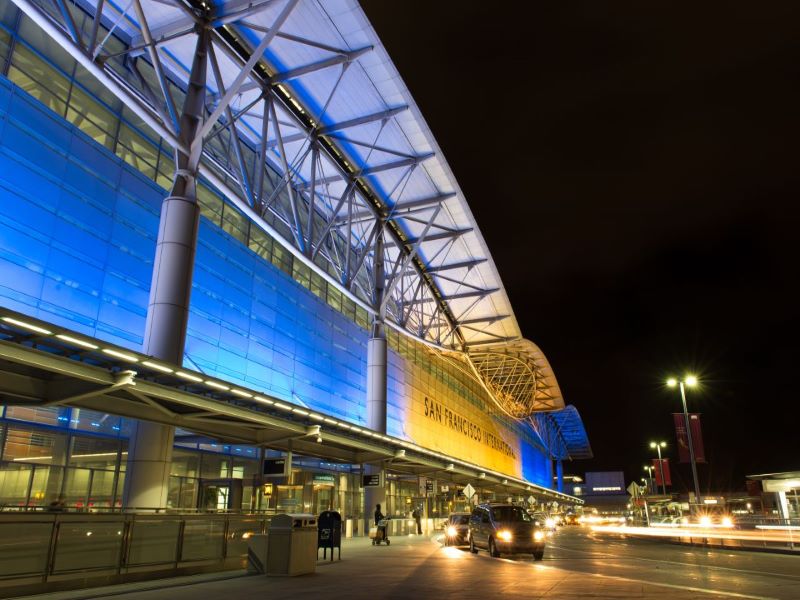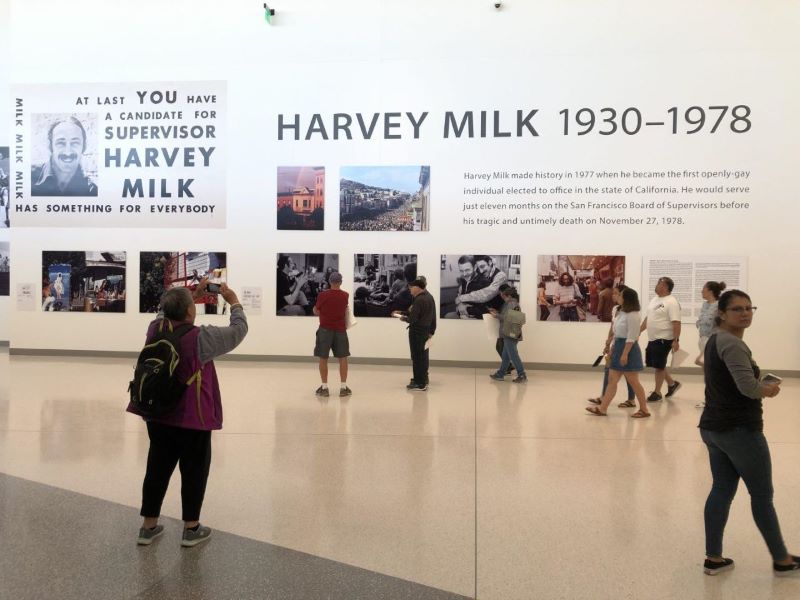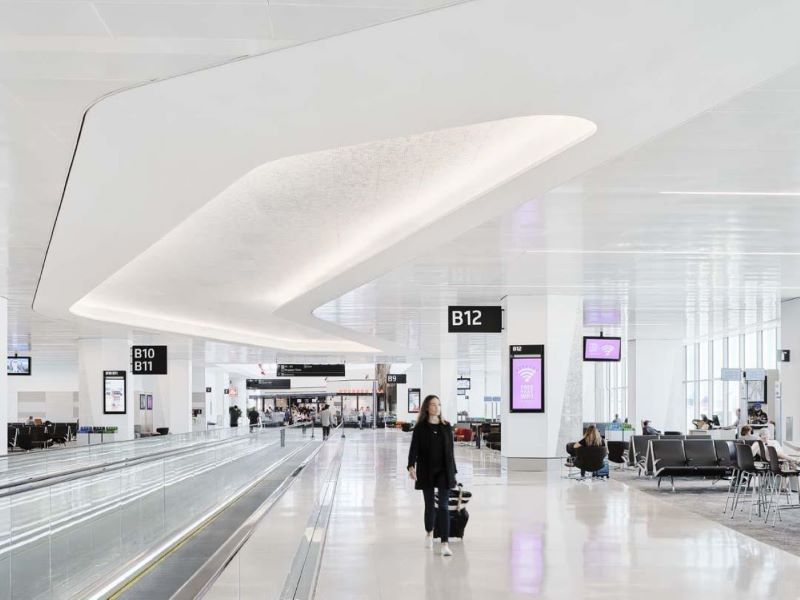San Francisco International Airport’s (SFO) Harvey Milk Terminal 1 is being renovated with an investment of more than $2.4bn to improve the passenger experience. Located in San Francisco, California, US, the airport offers non-stop flights to more than 50 international destinations cities.
SFO is the largest airport in the San Francisco Bay Area and offers nonstop service to Asia, South Pacific, Europe, Canada, Mexico, and across the US. The airport operates as an enterprise department of the city and county of San Francisco.
It handled 57.6 million passengers in 2019, which declined by 71.4% to 16.4 million in 2020 due to reduced flights and air travel caused by stay-at-home and travel restrictions amid the spread of the Covid-19 pandemic.
The airport features four terminals, namely International Terminal Building, Harvey Milk Terminal 1, Terminal 2, and Terminal 3. It offers a wide selection of restaurants and shops for travellers and free Wi-Fi services in all terminals.
Originally opened in 1963 as the South Terminal, the Terminal 1 facility was renamed Harvey Milk Terminal 1 after late American politician and gay rights activist Harvey Milk, following the approval from the San Francisco Board of Supervisors in April 2018.
Harvey Milk Terminal 1 redevelopment background
A ground-breaking ceremony took place at SFO in June 2016 to commemorate the redevelopment of Terminal 1, the oldest passenger terminal at the airport.
The construction of Harvey Milk Terminal 1 redevelopment has been split into the Boarding Area B (BAB) project and the Terminal 1 Center (T1C) project. The multi-phase terminal redevelopment project is expected to be completed by 2024.
Harvey Milk Terminal 1 redevelopment design
The redevelopment project is designed to make the travel experience less stressful, and more engaging. It will include a modern ticketing lobby and checkpoint, locally sourced dining options, public artwork from Bay Area artists, spacious waiting areas filled with natural light, and a museum exhibition named ‘Harvey Milk: Messenger of Hope’.
The 380ft exhibit includes historic images, campaign signs, press clippings, and quotes reflecting the life story of Harvey Milk.
Focused on relaxation, the terminal has been designed with high ceilings to diffuse noise and increase natural light to provide openness and support circadian rhythms.
Harvey Milk Terminal 1 features floor-to-ceiling windows, and luxurious chaise lounge chairs for passengers to relax before boarding their flight. A yoga room at the terminal will provide the space to allow travellers to practise yoga.
The terminal also features the ‘Kids’ Spot’, an interactive play area designed to provide fun to the kids while travelling with families.
Other amenities include retail and dining outlets, and the first gender-neutral restroom facilities at the airport.
The terminal is being installed with upgraded information dashboards throughout the boarding area to offer information on flight times, gates, and amenities.
Airside improvements include the reconfiguration of the 30-acre apron and taxiway in multiple phases.
With an environment-friendly design, the Harvey Milk Terminal 1 received the Fitwel ‘Best in Building Health® 2021′ award from the Center for Active Design, an American non-profit organisation that focuses on improving public health through design solutions.
Phases of San Francisco International Airport’s Terminal 1 redevelopment
In July 2019, the first nine-gate section of the BAB project was opened with flights from American low-cost airlines Southwest Airlines and JetBlue. The airport also opened an additional nine gates at Boarding Area B and the South Check-In lobby in May 2020. The next phase of the Harvey Milk Terminal 1 redevelopment was opened in May 2021. It includes the final seven departure gates that can be used for both domestic and international flights.
The latest phase also added a new mezzanine floor with connections to the AirTrain, public transit and the Central Parking Garage.
It also features a new post-security passenger walkway that directly connects the new Harvey Milk Terminal 1 to the International Terminal A gates, eliminating the need for passengers to go through a security checkpoint again.
A new museum gallery with rotating exhibitions by SFO Museum was also opened, while a children’s area was added near the new departure gates.
The phase also includes a new display of exhibit content honouring the life and legacy of Harvey Milk.
Furthermore, an expanded Recompose Area was created in the post-security check area to provide a relaxing space for passengers to gather items after security screening.
ICS baggage handling system
In July 2019, the Harvey Milk Terminal 1 became the first terminal in the US to be installed with a tote-based independent carrier system (ICS) to manage checked baggage. The system became operational in June 2020.
The CrisBag® ICS system ensures that each bag is placed in an individually controlled tote. The baggage remains in the same tote throughout the baggage handling and integrated security screening process from ticket counter check-in, through security screening, and out to its collection point. The ICS system ensures 100% tracking and traceability throughout the process.
Equipped with an explosives detection system (EDS), the CrisBag solution also consumes less energy and is easier to operate when compared to conventional systems.
Construction schedule
Work for the final phase of the Harvey Milk Terminal 1 involves the construction of a new North check-in lobby area. Originally scheduled for completion in April 2023, the last phase was delayed by the restrictions caused by the coronavirus pandemic. The phase is expected to be completed by mid-2024.
Contractors involved in the SFO Terminal 1 redevelopment project
The design-build team for the Terminal 1 Center project includes Hensel Phelps, Gensler, and Kuth Ranieri, while a joint venture of Aecom & Cooper Pugeda Management is the construction manager.
The BAB project team includes Austin Commercial & Webcor Builders joint venture, Woods Bagot, HKS, KYA and ED2 International. The construction managers for the BAB project are WSP, Parsons Brinkerhoff, and AGS.
British engineering and professional services company Arup was contracted to serve as the lead airside civil engineer for the project.
Automated baggage handling systems provider Beumer Group installed the ICS at Terminal 1.






